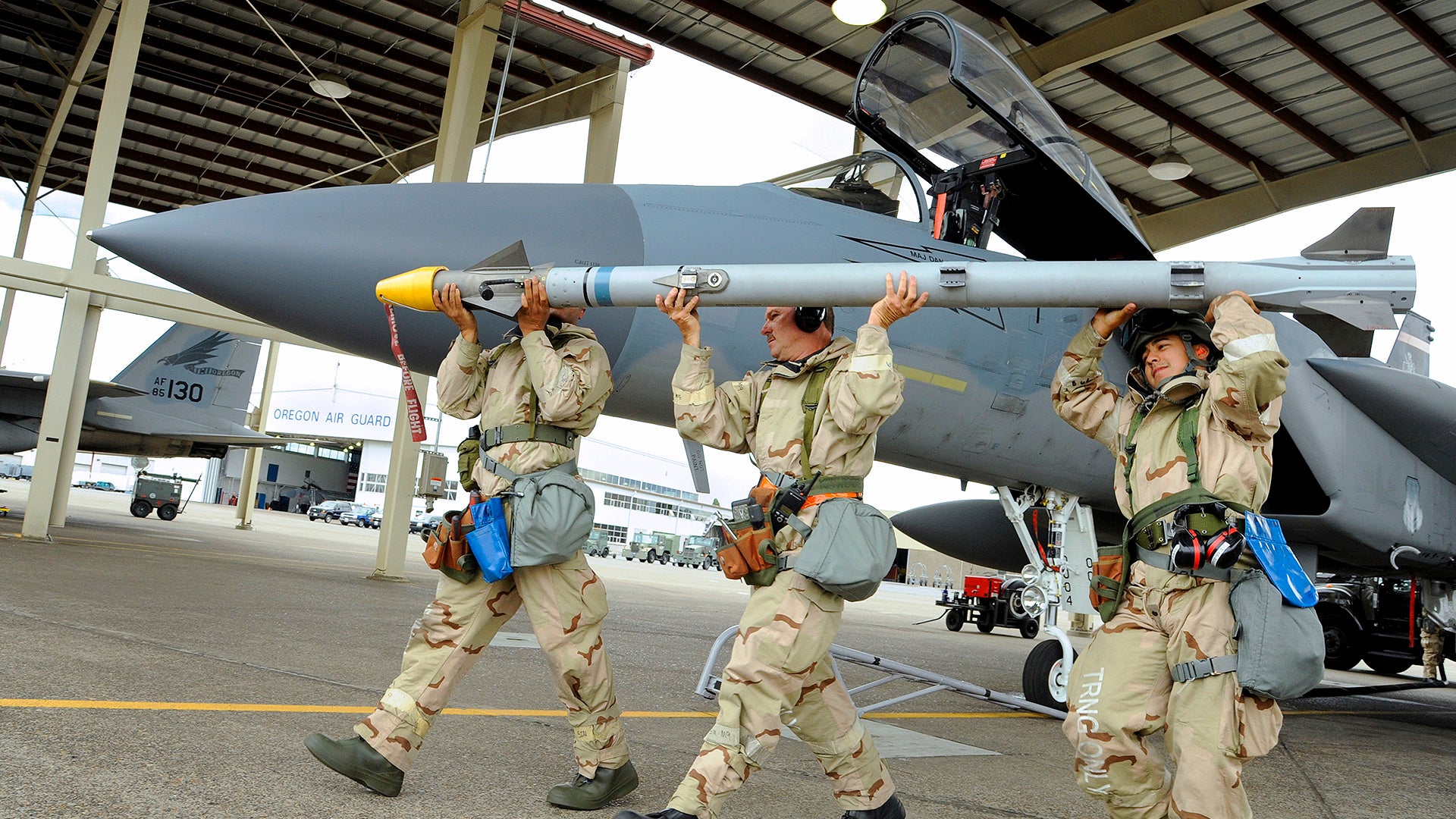Yesterday, we reported on an emergency arrested landing made by an Oregon Air National Guard F-15C from the 142nd Fighter Wing. The jet had been in the air for some time before it made its way back to its home base at Portland International Airport and landed via catching the emergency cable with its tail hook on runway 28L. Now, The War Zone has learned that the aircraft in question was part of an alert training mission and was fully armed with live air-to-air missiles when it took off. During the emergency, the decision was made to fire off all of its armament into the Pacific Ocean before returning to land, an operation that is apparently quite rare in the F-15 community.
The aircraft, which had the callsign “ROCK 42,” a moniker associated directly with the alert mission, had a gear issue upon takeoff with one of its main gear failing to retract. Our sources close to the F-15 community have told us the particular issue with this aircraft’s landing gear was of questionable severity. We won’t go into any more detail on that aspect of the story at this time, but the diagnosis of the issue, or lack thereof, ended up prompting the F-15C to fly out over the Oregon Coast and into the vast military operating areas (MOAs) that Eagles from Portland frequent on a daily basis, and fire off its missile load on a ballistic trajectory into the sea below. The jet was limited to roughly 250 miles per hour the entire trip due to the overspeed limitation on the F-15’s landing gear when extended.

The missiles were fired instead of dropped for a number of factors. First, the underwing missiles cannot be jettisoned without also dropping the pylons and the aircraft’s wing tanks. Second, hitting the water at high mach speeds damages the missiles severely, if not destroying them altogether. But dumping the Eagle’s weapons load came at a very high cost.
Depending on how many missiles were carried and of what type, the price of sending that F-15C’s entire arsenal to Davy Jones’s locker added up to millions of dollars. Usually, alert F-15s will go out with six or eight missiles. Traditionally, such a configuration will include four AIM-120C AMRAAMs and a pair of AIM-9X Sidewinders. Alternatively, they will fly with a full loadout of six AIM-120 AMRAAMs and two AIM-9X Sidewinders.
Here is an exact unit cost of each missile and the sub-variants that are in production and/or are presently carried by F-15C Eagles. The numbers are taken directly from various fiscal year Pentagon budgets:
AIM-9X Block II (as of FY19 budget): ~$408,000
AIM-9X Block I (as of FY09 budget): ~$250,000 (~$292,000 in 2019 dollars)
AIM-120D (as of FY19 budget): ~$1.5 million
AIM-120C-7 (as of FY09 budget): ~1.0 million (~$1.16 in 2019 dollars)
So at the very least, we are talking about $4.5M worth of missiles here, but that figure is likely somewhat higher.
For fighter aircraft that experience sudden emergencies, punching off drop tanks and air-to-ground weaponry does occur. The idea being that doing so makes the jet much lighter, which can help with certain performance or mechanical issues. A byproduct of this is that makes it so a crash landing doesn’t turn into a detonation of high-explosive ordnance designed to cause massive destruction. But firing off a fighter’s air-to-air loadout during an emergency seems to be a far less established practice. In fact, sources that we talked to in the USAF fighter community had never even heard of such a thing occurring in the past.
We reached out to the 142nd Fighter Wing for comment and they did confirm that the aircraft’s weaponry was indeed jettisoned before landing, but they weren’t prepared to offer additional details at this time. Our sources have noted that an inquiry is underway as to what exactly happened, what decisions were made, and why they were made. Keep in mind, that the Western Air Defense Sector (WADS) of NORAD was also closely involved with this incident as the alert fighters were under their control as events unfolded.
In the end, what matters most is that everyone walked away safely from the emergency landing. But there could be important lessons to learn from this incident and they may not have come cheap considering the amount of advanced air-to-air weaponry that was blasted into the waters off Oregon on Wednesday afternoon.
Contact the author: Tyler@thedrive.com
